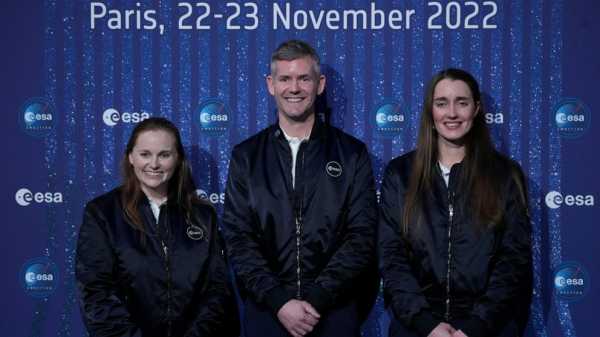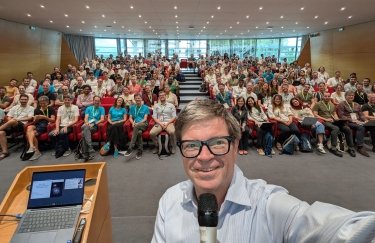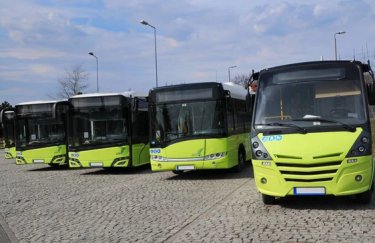
PARIS — The European Space Agency made history Wednesday by selecting an amputee who lost his leg in a motorcycle accident to be among its newest batch of astronauts — a leap toward its pioneering ambition to send someone with a physical disability into space.
John McFall, a 41-year-old Briton who lost his right leg when he was 19 and went on to compete in the Paralympics, called his selection at Europe's answer to NASA “a real turning point and mark in history.”
“ESA has a commitment to send an astronaut with a physical disability into space … This is the first time that a space agency has endeavored to embark on a project like this. And it sends a really, really strong message to humanity,” he said.
The newly-minted parastronaut joins five career astronauts in the final selection unveiled during a Paris news conference — the conclusion of the agency's first recruitment drive in over a decade aimed at bringing diversity to space travel.
The list also included two women: France’s Sophie Adenot and the UK’s Rosemary Coogan, new ambassadors for another greatly underrepresented section for European astronauts. A small minority of those who have explored space have been women, and most of those were Americans.
Wednesday's list did not, however, include any persons of color. The hiring campaign didn’t specifically address ethnic diversity, but at the time stressed the importance of “representing all parts of our society.”
McFall will follow a different path than his fellow astronauts because he will participate in a groundbreaking feasibility study exploring whether physical disability will impair space travel. It's uncharted land, since no major Western space agency has ever put a parastronaut into space, according to the ESA.
Speaking with pride amid flashes of emotion, McFall said that he was uniquely suited to the mission because of the vigor of his mind and body.
“I’m very comfortable in my own skin. I lost my leg about twenty plus years ago, I’ve had the opportunity to be a paralympic athlete and really explored myself emotionally … All those factors and hardships in life have given me confidence and strength — the ability to believe in myself that I can do anything I put my mind to,” he added.
"I never dreamt of being an astronaut. It was only when ESA announced that they were looking for a candidate with a physical disability to embark on this project that it really sparked my interest."
The feasibility study, that will last two to three years, will examine the basic hurdles for a parastronaut including how a physical disability might impact mission training, and if modifications to spacesuits and aircraft are required, for example.
ESA’s Director of Human and Robotic Exploration David Parker said it was still a “long road” for McFall but described the fresh recruitment as a long-held ambition.
Parker said it started with a question. “Maybe there are people out there that are almost superhuman in that they’ve already overcome challenges. And could they become astronauts?”
Parker also says that he “thinks” it may be the first time the word “parastronaut” has been used, but “I do not claim ownership.”
“We’re saying that John (McFall) could be the first parastronaut, that means someone who has been selected by the regular astronaut selection process but happens to have a disability that would normally have ruled him out,” he said.
It will be at least five years before McFall goes into space as an astronaut — if he is successful.
Across the Atlantic, Houston is taking note. Dan Huot, a spokesman for NASA’s Johnson Space Center, home to the American agency’s astronaut corps, told the AP that “we at NASA are watching ESA’s para-astronaut selection process with great interest.”
Huot acknowledged that “NASA’s selection criteria currently remains the same” but said the agency is looking forward to working with the “new astronauts in the future” from partners such as the ESA.
NASA stressed that it has a safety-conscious process for vetting future astronauts who might be put in life-threatening situations.
“For maximum crew safety, NASA’s current requirements call for each crew member to be free of medical conditions that could either impair the person’s ability to participate in, or be aggravated by, spaceflight, as determined by NASA physicians,” Huot added.
NASA said future “assistive technology” might change the game for “some candidates” to meet their stringent safety requirements.
The European agency received applications from all member nations and associate members, though most came from traditional heavyweights France, Germany, Britain and Italy.
The two-day ESA council running Tuesday to Wednesday in Paris also saw France, Germany and Italy announcing an agreement Tuesday for a new-generation European space launcher project as part of apparent efforts to better compete with Elon Musk’s SpaceX and other rocket programs in the U.S. and China.
The ESA’s 22 European members also announced their commitment to “space ambitions” with a budget rise of 17% — representing 16.9 billion euros over the next three years. It will fund projects as diverse as tackling climate change to exploring Mars.
———
Associated Press writer Marcia Dunn contributed to this story from Cape Canaveral, Florida
Sourse: abcnews.go.com





